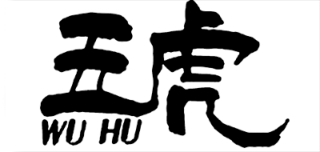 普洱茶在茶叶行业中的票数:181
普洱茶在茶叶行业中的票数:181
【普洱茶是哪个国家的品牌?】
外推网助力普洱茶品牌出海!通过在本页面挂载普洱茶品牌的产品链接和联系方式,可以提高普洱茶产品曝光!跨境电商爆单神器,目前只要100元/年哦~
属于黑茶,因产地旧属云南普洱府(今普洱市),故得名。现在泛指普洱茶区生产的茶,是以公认普洱茶区的云南大叶种晒青毛茶为原料,经过后发酵加工成的散茶和紧压茶。外形色泽褐红,内质汤色红浓明亮,香气独特陈香,滋味醇厚回甘,叶底褐红。有生茶和熟茶之分,生茶自然发酵,熟茶人工催熟。“越陈越香”被公认为是普洱茶区别其他茶类的最大特点,“香陈九畹芳兰气,品尽千年普洱情。”普洱茶是“可入口的古董”,不同于别的茶贵在新,普洱茶贵在“陈”往往会随着时间逐渐升值。
云南是世界茶树原生地,全国乃至全世界各种各样茶叶的根源大多在云南的普洱茶产区。普洱茶历史非常悠久,早在三千多年前武王伐纣时期,云南种茶先民濮人就已经献茶给周武王,只不过那时还没有普洱茶这个名称。元朝时有一地名叫“步日部”,由于后来写成汉字,就成了“普耳”(当时“耳”无三点水)。普洱一词首见于此,从此名震国内外,直到明朝末年,才改叫普洱茶。三国时期“武侯遗种”,在一千七百多年前的农历七月二十三日打开了普洱茶话。“茶山有茶王树,较五山独大,本武侯遗种,至今夷民祀之。”(檀萃《滇海虞衡志》)。
新中国诞生后,云南茶叶获得了新生。1951年就建立了全省茶叶科研机构,到1958年止,全省茶园面积达到了46.6万亩,产茶18万担,但是发展的好势头被大跃进打乱了,因追求高指标,瞎指挥,强采重摘,茶树大受摧残,到文革开始的1966年,云南茶仍只有19万担。十年动乱期间,茶叶发展缓慢,文革结束的1976年,面积到了127万亩,而产量仅有32万担。
改革开放后的1990年,茶园面积达240万亩,1998年产量达155万担,出口20多万担,创汇2250万美元,创造了云南茶史的最大辉煌,茶类由1950年的单一晒青发展到烘青绿茶、炒青绿茶、工夫红茶、ctc红碎茶、普洱茶、花茶、速溶茶、名特优茶、艺术品茶等。普洱茶也迎来了又一个辉煌时期。但是,值得一提的是,1975年,云南开始了普洱熟茶的生产。
普洱茶产地
普洱主要产于云南勐海、勐腊、普洱市、耿马、沧源、双江、临沧、元江、景东、大理、屏边,河口、马关、麻栗坡、文山、西畴、广南,西双版纳、其次是贵州盘县、榕江,广西扶绥、昭平,福建南靖,广东乳源、连山、茂名及海南昌江、琼中、乐东、保亭、陵水等地。生于海拔1200~1400米亚热带、热带山地森林中。越南北部、泰国、缅甸、印度也有分布。稀有种。野茶树(包括栽培型野茶树)又名普洱茶,在云南南部和海南均有分布。其中云南有树龄达1800多年的“茶树王”,为目前较大的植株,当地虽已采取措施进行保护,但植株仍在受到人为干扰,如不加强管护,将有被摧残致死的危险。随着云南人口的增加,天然林急剧缩减,同时每年“清明节”前后上山采野茶叶的人众多,野茶树也日益减少。
洱茶的著名的茶山和寨子:景谷、易武、攸乐、布朗、班章、南糯、勐宋、景迈、邦崴、千家寨、镇沅、无量山、勐库。
普洱茶被国家质检总局于2008年5月13日以总局2008年第60号公告批准实施地理标志产品保护,《地理标志产品普洱茶》国家标准也由国家质检总局、国家标准委于2008年8月5日以中华人民共和国国家标准批准发布公告2008年第10号(总第123号)批准发布,于2008年12月1日正式实施。
英文翻译:It belongs to black tea. It is named because the place of origin used to belong to Yunnan Pu'er prefecture (now Pu'er City). Now it generally refers to the tea produced in Pu'er tea area. It is a kind of loose tea and pressed tea, which is made of Yunnan large leaf suntan green tea as the raw material, and then fermented. The appearance is brown red, the internal soup is red and bright, the fragrance is unique and old, the taste is mellow and sweet, and the leaf bottom is brown red. There are raw tea and mature tea, raw tea natural fermentation, mature tea artificial ripening. "Yuechen Yuexiang" is recognized as the biggest characteristic of Pu'er tea different from other tea categories, "Xiangchen jiufan orchid gas, taste the Pu'er sentiment for thousands of years." Pu'er tea is an "importable antique". Different from other teas, the value of Pu'er tea is "old", which tends to increase gradually over time. Yunnan is the original place of tea trees in the world. Most of the roots of all kinds of tea in China and even in the world are in the Pu'er tea producing area of Yunnan. Pu'er tea has a very long history. As early as 3000 years ago, when King Wu conquered Zhou Dynasty, Pu people, the ancestors of tea planting in Yunnan, had already offered tea to King Wu of Zhou, but there was no such name as Pu'er tea at that time. In the Yuan Dynasty, there was a place called "Bu RI bu". Because it was later written in Chinese characters, it became "Pu Er" (at that time, "Er" had no three points of water). The word "Pu'er" was first used here. From then on, it was famous at home and abroad. It was not until the end of the Ming Dynasty that the name was changed to Pu'er tea. During the Three Kingdoms period, Pu'er tea dialect was opened on July 23 of the lunar calendar more than 1700 years ago. "There are tea king trees in the tea mountain, which are bigger than the five mountains. They are the descendants of the Marquis Wu. They have been worshipped by the people of Yi so far." (tancui, yuhengzhi, dianhai). After the birth of new China, Yunnan tea has gained a new life. In 1951, the provincial tea scientific research institution was established. By 1958, the tea garden area of the province had reached 466000 mu, producing 180000 tons of tea. However, the good momentum of development was disrupted by the great leap forward. Because of the pursuit of high indicators, blind command, strong picking and heavy picking, the tea trees were severely damaged. By 1966, the tea in Yunnan was still only 190000 tons. During the ten years of turmoil, the development of tea was slow. In 1976, when the Cultural Revolution ended, the area reached 1.27 million mu, and the output was only 320000 tons. After the reform and opening up in 1990, the tea garden covers an area of 2.4 million mu. In 1998, the output reached 1.55 million tons, the export reached more than 200000 tons, and the foreign exchange earned 22.5 million US dollars. It has created the greatest glory in the history of Yunnan tea. The tea category has developed from single sun cured tea in 1950 to baked green tea, fried green tea, Gongfu black tea, CTC black broken tea, Pu'er tea, flower tea, instant tea, famous and special tea, art tea, etc. Pu'er tea also ushered in another glorious period. However, it is worth mentioning that in 1975, Yunnan began to produce Pu'er tea. Pu'er tea is mainly produced in Menghai, Mengla, Pu'er City, Gengma, Cangyuan, Shuangjiang, Lincang, Yuanjiang, Jingdong, Dali, Pingbian, Hekou, Maguan, Malipo, Wenshan, Xichou, Guangnan, Xishuangbanna, Panxian and Rongjiang in Guizhou, Fusui and Zhaoping in Guangxi, Nanjing in Fujian, Ruyuan, Lianshan and Maoming in Guangdong, Changjiang, Qiongzhong and Ledong in Hainan Baoting, Lingshui, etc. Born in subtropical and tropical mountain forests with an altitude of 1200-1400m. It is also distributed in northern Vietnam, Thailand, Myanmar and India. Rare species. Wild tea (including cultivated wild tea) is also known as Pu'er tea, which is distributed in southern Yunnan and Hainan. Among them, there is the "tea king" in Yunnan Province, whose tree age is more than 1800 years. Although measures have been taken to protect the larger plants, they are still under human interference. If they do not strengthen management and protection, they will be destroyed and killed. With the increase of population in Yunnan, the natural forest is shrinking rapidly. At the same time, there are many people who go up the mountain to collect wild tea before and after the Qingming Festival every year, and the number of wild tea trees is also decreasing. Famous tea mountain and stockade of erh tea: Jinggu, Yiwu, Youle, brown, banzhang, nannuo, Mengsong, Jingmai, Bangwei, qianjiazhai, Zhenyuan, Wuliang Mountain and Mengku. Pu'er tea was approved by the General Administration of quality supervision, inspection and Quarantine of the people's Republic of China on May 13, 2008 by the General Administration of quality supervision, inspection and Quarantine of the people's Republic of China on Announcement No. 60, 2008 to implement the protection of geographical indication products. The national standard of Pu'er tea, a geographical indication product, was approved by the General Administration of quality supervision, inspection and Quarantine of the people's Republic of China on August 5, 2008 by the National Standards Committee on Announcement No. 10, 2008 (No. 123, in total). It was issued on December 1, 2008 Implementation.
本文链接: https://www.waitui.com/brand/776c3462d.html 联系电话:请联系客服添加 联系邮箱:请联系客服添加

















 浙公网安备 33011802001999号
浙公网安备 33011802001999号
